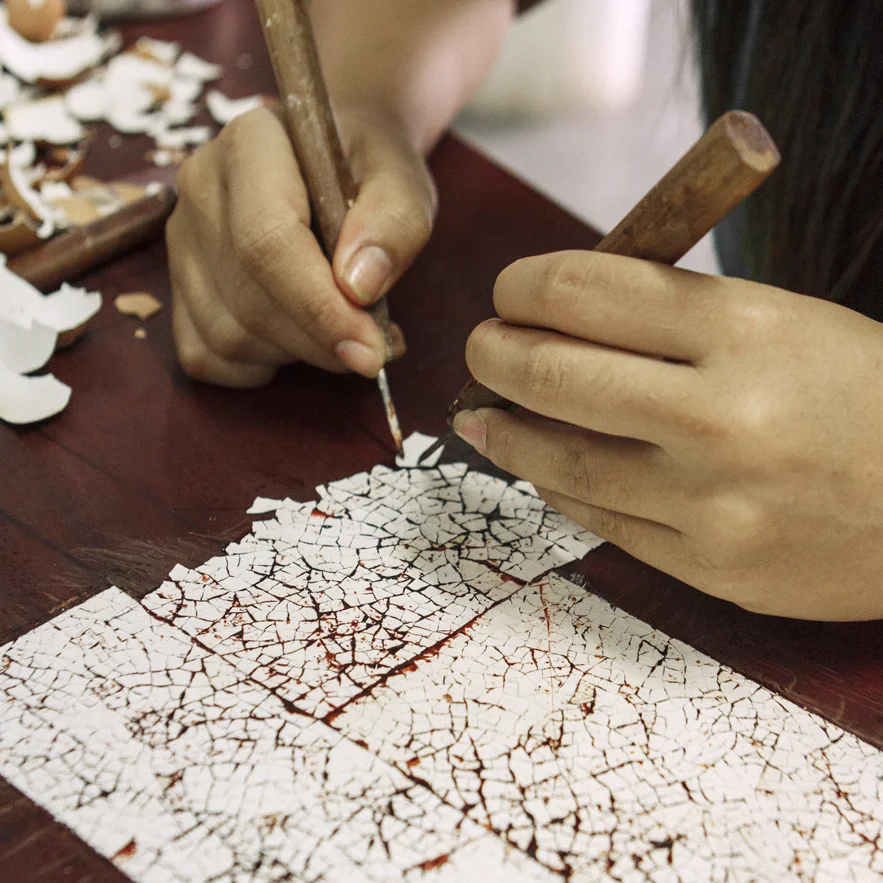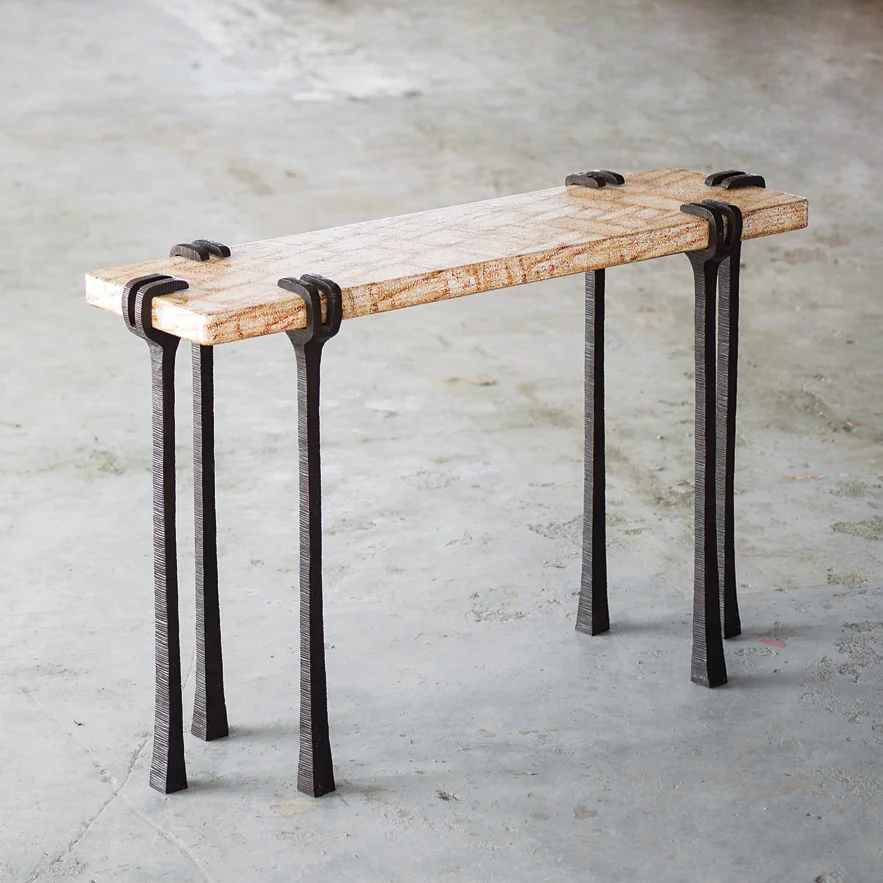Eggshell has been an obsession of mine recently. It is the strongest and yet most delicate material. The work itself is satisfying as you push the little fragments of eggshell into place gradually building up a floor of intricate craquelure. But this is just the beginning. Finding ways to bring this ancient craft to life through colour, form, line and finish is where the fun really takes place.

Tools of the trade.
I used to work with eggshell makers in Vietnam but I found that there was always a certain static dullness to the results. This was caused by the ubiquitous use of MDF or composite substrates plus the fact that most of the ‘lacquer’ is not lacquer at all but one or other sprays from the plastic industry; acrylic and polyurethane were the most common finishes. All the eggshell handwork was being done on a nasty industrial product and then it was being covered with a nasty industrial product! No surprise that the eggshell felt dead.
Having seen the work of Japanese lacquer masters I knew that a whole other world of eggshell could be made with the right ingredients and process. It was this world of vibrant tiny, fragile, richly polished eggshell that I wanted to find and play with.

Working with eggshell inlay requires skill and a meditative attention and eye for detail.
It is probable that eggshell was first developed to provide areas of white in lacquer work. It is almost impossible to make natural white lacquer. It has been used on Japanese sword handles and armour and numerous decorative pieces from tea caddies to hair pins to the acoutrements of the kimono.
Eggshell is made entirely from calcium carbonate. This is the main component of many materials found in nature: rocks, seashells and pearls. Eggshell also comes from one of nature’s most beautiful and primordial forms – the egg. Our eggshell is mainly made from chicken eggs (sometimes ducks) that we buy from a cakeshop nearby.
In our workshop we apply eggshell lacquer to many things mostly using the inside of the eggshell. The mosaic pattern is achieved with a cracking motion using the ends of pointed tools. The concave side of the eggshell provides a small ‘cup’ that then fills with lacquer or gold creating a pattern. Once the eggshell pattern has been laid down, numerous layers of natural lacquer are applied to build up the surface until it is smooth and can be polished.

A detail shot of our upcoming eggshell coasters.
Eggshell inlay requires skill, meditative attention and an eye for detail in order to achieve consistency and a flow of movement in the pattern. One beautiful aspect of this material is that different people create very different expressions of eggshell as artisan and material work together to make each unique piece.
During 2015 I will be bringing out a collection of eggshell and lacquer pieces that I think will delight and impress you. It is very much my daily work at present.








